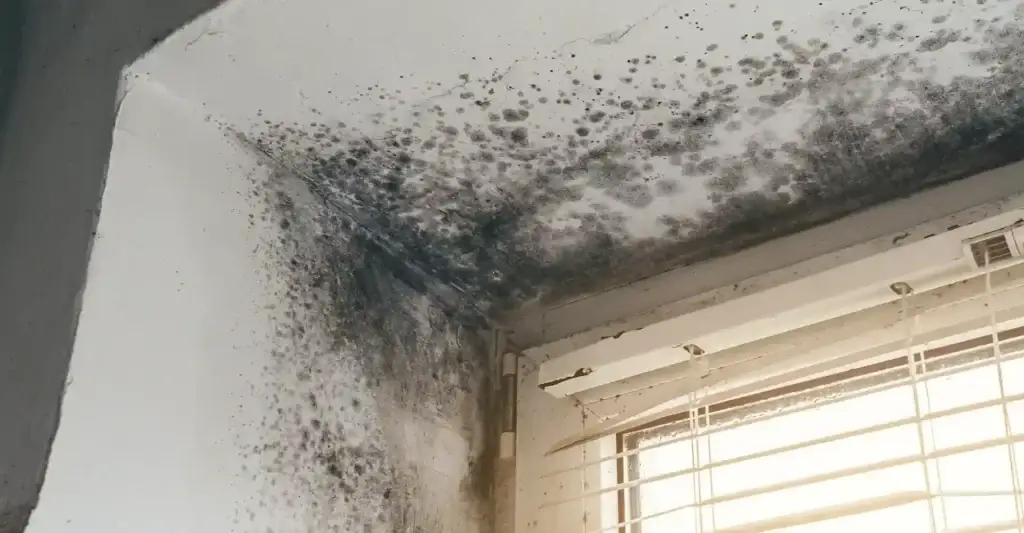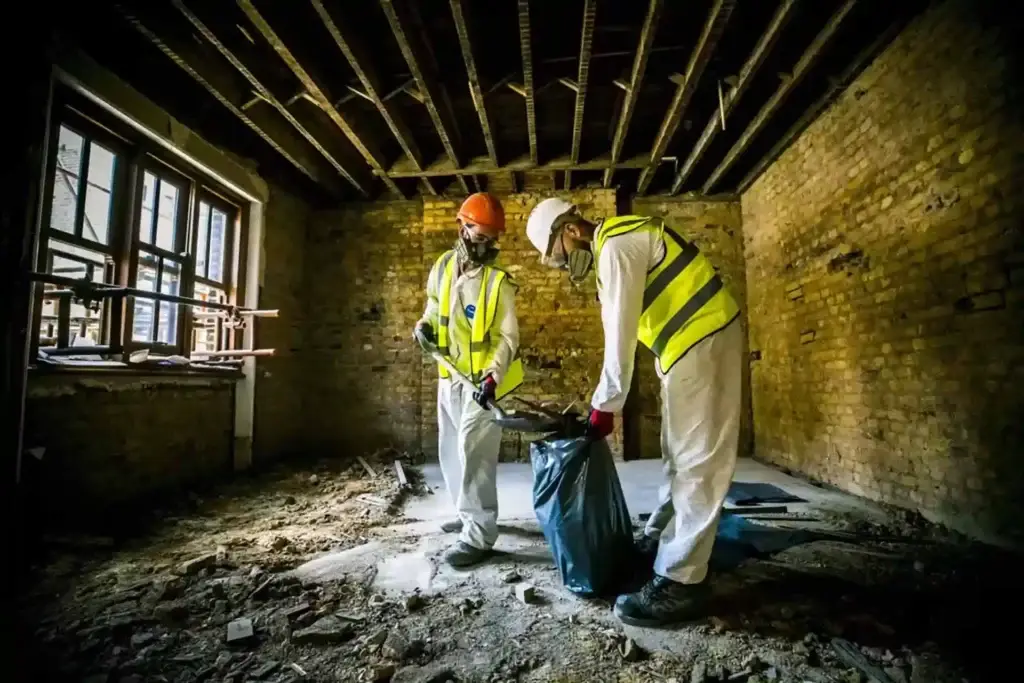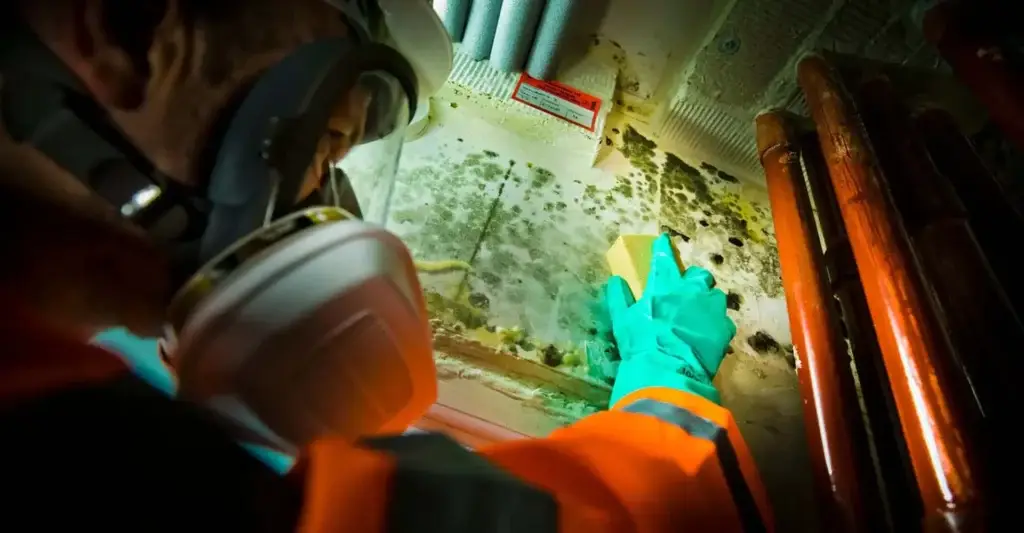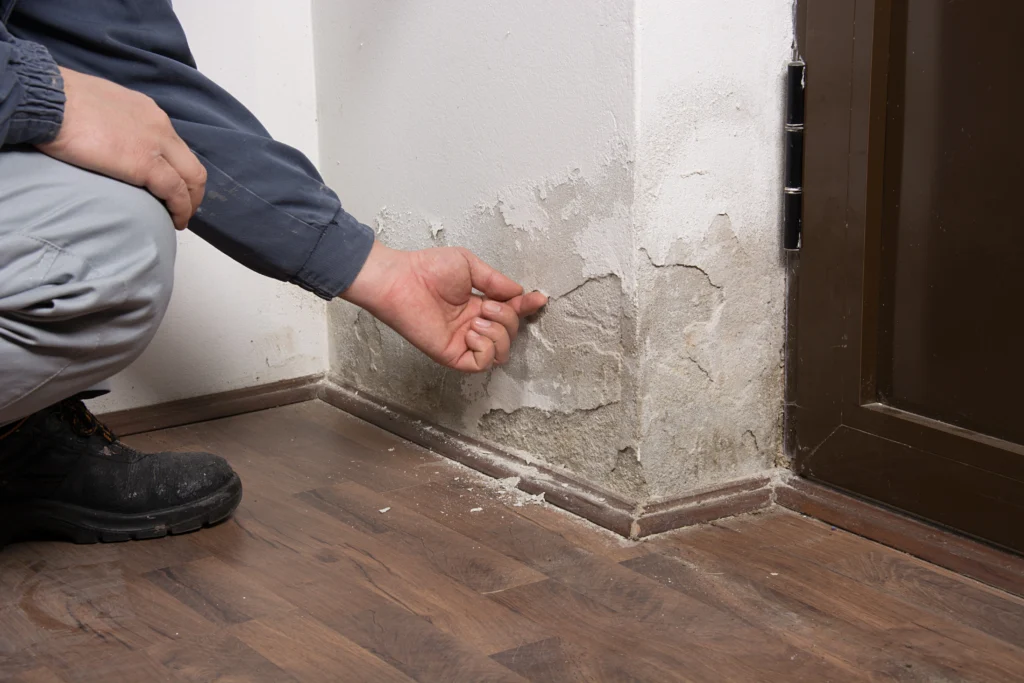Mould on walls is more than just an unsightly problem; it can have serious implications for your health and the structural integrity of your home. Whether you’ve spotted small black patches in your bathroom, green stains on your kitchen walls, or a musty odour in your bedroom, mould growth is a clear sign of excess moisture that needs urgent attention.
In this comprehensive guide, we’ll cover everything you need to know about how to remove mould from walls, budget-friendly DIY hacks, safe removal without damaging paint or wallpaper, and why professional remediation is often the safest and most effective option. If you’re worried about mould in your property, Ideal Response is the trusted expert with over 20 years of experience in mould remediation and surveys across the UK, including high-risk areas like Hastings, Croydon, Eastbourne and London.
Skip to:
Why removing mould is important
What causes mould on walls?
Mould thrives in damp, poorly ventilated environments. Common causes include:
- Condensation, leaks & damp: the main culprits: High humidity and poor ventilation cause water droplets to form on cold surfaces, creating the perfect environment for mould. This is particularly common in bathrooms, kitchens, and bedrooms with poor airflow. Hidden plumbing leaks, roof damage, or guttering issues can also introduce moisture into walls, and even a small drip can lead to long-term mould problems.
- Rising damp: Ground moisture travelling upwards through porous walls. This is often seen in older properties without adequate damp-proofing.
- Flooding or water damage: Previous incidents that weren’t properly treated can leave walls vulnerable. Residual moisture trapped inside building materials can take months to fully dry, creating hidden mould growth.
Identifying the root cause of mould is just as important as removing it. Without addressing the underlying moisture issue, mould will almost always return. The best way to accurately identify the underlying casue of your mould issue is to have a professional damp survey completed.
Why removing mould is important
Mould growth isn’t just a cosmetic issue; it poses real health and safety risks:
- Health risks: Prolonged exposure to mould spores can aggravate asthma, trigger allergies, and cause respiratory issues. Children, the elderly, and those with weakened immune systems are particularly at risk of complications.
- Property damage: Mould can weaken plaster, paint, and wallpaper. If left untreated, it can seep deeper into structural materials, creating expensive repair bills.
- Landlord obligations under Awaab’s Law: Under recent housing legislation, landlords have a legal duty to address damp and mould issues quickly. Failing to do so can result in financial penalties and reputational damage.
DIY mould removal: Cheap and effective hacks
For very small patches of mould (less than one square metre), you may attempt to remove it yourself. Popular DIY options include:
- White vinegar: A natural antifungal that’s effective and cheap (as little as 35p per bottle). Spray directly onto mould patches, leave for an hour, and wipe away. Vinegar not only removes visible mould but also helps neutralise spores.
- Bicarbonate of soda: Mix with water into a paste to scrub small mould areas. It’s gentle on surfaces and helps absorb moisture, reducing the chance of regrowth.
- Warm soapy water: Gentle enough for painted walls and wallpaper. Using this method avoids harsh chemicals and helps maintain the appearance of decorative finishes.
- Best mould removers for walls in the UK: Products like HG Mould Spray are highly rated for long-lasting results. These products are designed to kill mould at the root, not just remove surface stains.
Important: DIY removal is not suitable for widespread mould growth or recurring infestations. Attempting to treat serious mould problems without the correct knowledge and equipment can make the issue worse and increase health risks. You can easily spread spores throughout the your property or introduce additonal moisture into surfaces, providing the mould with more of what it needs to thrive.
Professional mould remediation services in the UK
Hiring mould remediation specialists like Ideal Response ensures:
- Comprehensive inspection: Identifying the source of moisture through a professional mould survey, ensuring no hidden damp is left untreated.
- Safe removal: Industry-approved cleaning methods and specialist equipment remove mould without spreading spores throughout your home.
- Mould removal without damaging paint or wallpaper: Gentle removal that won’t ruin finishes, preserving the look of your home while solving the problem.
- Long-term prevention: Recommendations and solutions such as improved ventilation, leak repairs, or damp-proofing stop mould from returning.
- Peace of mind: Certified, insured professionals handling the issue means you can trust that the job is done properly and safely.
You can see how Ideal Response successfully carries out urgent black mould removal and commercial mould remediation for UK customers. These two case studies will give you an in-depth look into how professional mould removal is carried out and why expert support is vital.
The professional mould removal process explained
- Survey & inspection: Identifying moisture sources and the extent of mould growth using advanced diagnostic tools.
- Containment: Preventing the spread of spores to other areas of the property using industry-grade barriers and filters.
- Removal & cleaning: Safe elimination of mould using advanced treatments and specialist cleaning solutions.
- Drying & dehumidification: Reducing moisture levels in affected areas with industrial drying equipment.
- Prevention measures: Long-term solutions such as improved ventilation, damp-proofing, or insulation upgrades to prevent recurrence.
Preventing mould from returning in your home
Prevention is always better than a cure. Here are proven strategies to stop mould returning in your home:
- Improve ventilation: Install extractor fans in kitchens and bathrooms, open windows regularly, or invest in a dehumidifier to reduce humidity.
- Fix leaks promptly: Even small plumbing or roofing leaks can fuel mould growth. Regular inspections and quick repairs save money in the long run.
- Keep rooms warm: Cold surfaces encourage condensation. Maintaining a steady indoor temperature reduces this risk.
- Use anti-mould paints and coatings: These products contain fungicides that provide extra protection in areas prone to damp.
- Maintain gutters and roofing: Blocked gutters and damaged roofs often lead to water ingress. Regular maintenance is one of the simplest ways to prevent mould.

Why choose Ideal Response for mould removal?
- Over 20 years’ experience in mould surveys and remediation, helping thousands of satisfied UK homeowners and landlords.
- Rapid response times across the UK, including Hastings, Croydon, Eastbourne, London, and beyond, to stop mould problems before they spread.
- Fully trained & accredited specialists with industry-leading knowledge, ensuring every job is completed to the highest standard.
- Tailored solutions that address both removal and prevention, giving you lasting results rather than temporary fixes, which saves you both money and a future headache.
- Trusted by homeowners, landlords, and businesses nationwide, with a reputation built on reliability and professionalism.
Conclusion: Protect your health and property from mould
Mould on walls is not just a nuisance; it’s a warning sign of underlying moisture problems that can affect both your health and your home. While small patches can sometimes be managed with DIY cleaning methods like vinegar or bicarbonate of soda, professional mould remediation is the safest and most effective way to deal with recurring or extensive growth. By addressing the root cause and taking preventative steps, you can enjoy a safe, healthy, mould-free property.
Need to speak to a specialist urgently? Call 01622 926 505
How to remove mould from walls: Frequently asked questions
Can I paint over mould on walls?
No. Painting over mould only hides the problem temporarily. The mould will continue to grow beneath the paint and resurface.
Does bleach kill mould on walls?
Bleach may remove visible staining but does not kill mould spores effectively. Safer alternatives include vinegar, bicarbonate of soda, or specialist sprays like HG Mould Remover.
Is mould dangerous to live with?
Yes. Prolonged exposure to mould spores can cause respiratory issues, allergies, and worsen conditions like asthma.
How much does professional mould removal cost in the UK?
Costs vary depending on the severity and location of the mould. A professional survey will provide an accurate quote tailored to your property.
How quickly can Ideal Response deal with mould problems?
We offer rapid response times across the UK and can often attend within 24-48 hours of your enquiry.
Will mould come back after removal?
If the underlying cause (damp or moisture) is not addressed, mould will return. Professional remediation includes long-term prevention strategies.
Is mould removal covered by insurance?
Some home insurance policies cover mould if it results from sudden damage, like a burst pipe. It’s best to check your policy details.
What’s the best mould remover for walls?
Many UK homeowners recommend HG Mould Spray, while professionals use advanced treatments not available in stores for lasting protection.
Can mould be removed without damaging wallpaper or paint?
Yes. Gentle methods such as vinegar or soapy water can be used for delicate surfaces, while professionals use safe techniques to preserve finishes.

Tahlia Ibrahim - Delivery Manager
Tahlia has over four and a half years of in-depth experience across various facets of the disaster recovery industry. Having progressed through roles in marketing and sales to her current position, Tahlia possesses a comprehensive understanding of the entire business operation, from initial client contact to meticulous service delivery. A certified BioSweep Specialist, she excels in advanced odour elimination techniques, ensuring thorough restoration.





















